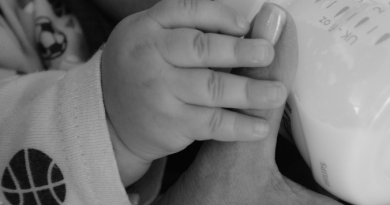‘Good Ethics and Bad Choices’: How does behavioral economics impact medical ethics?
Jennifer Blumenthal-Barby is Cullen Professor of Medical Ethics and associate director for the Center for Medical Ethics and Health Policy. She recently wrote a book titled “Good Ethics and Bad Choices,” which explores the relevance of findings from behavioral economics for medical decision making, clinical practice, and medical ethics.
The book takes readers through examples of cognitive biases, framing effects, and more, showing how “choice architecture” has real and significant impacts on patients’ choices. It challenges some of the most fundamental tenets of medical ethics, including the mythical ideals of the neutral presentation of information and the rational, autonomous decision-maker. It is essentially a study of the ethics of influence.
In the following Q&A, Blumenthal-Barby shares her perspective, creative process and some key takeaways from the book.

Q: What inspired you to write this book?
A: I went to graduate school for philosophy and studied theoretical views of autonomy and agency. I was humbled and excited when I started working inter-disciplinarily with decision scientists and learned that judgment and decision-making are far more interesting and complicated than most theoretical views assumed. There was a disconnect between the ideals of decision making and the realities.
The realities raised significant philosophical and ethical questions about the boundaries of accepting and shaping human choices and actions — especially around health and health-related behaviors. This book aims to tackle these issues.
Q: What are some tangible ways that behavioral economics can help improve medicine? And how can it be better integrated into medical education?
A: Behavioral economics can help us:
- Understand why patients (or policymakers or clinicians) are making the decisions that they are.
- Know how to re-direct decision-making and shape choices to better align people’s choices with their values and interests.
It is critical that some education about behavioral economics be integrated into medical education — even one lecture on how behavioral economics impacts informed consent goes a long way in my experience.
Q: Tell us more about your creative process. What was the biggest challenge, surprise, or discovery?
A: My process was like chipping away at a large rock bit by bit. I spent a lot of time making outlines of the arguments I wanted to make in the book and the issues I wanted to cover. I did make sure to include a good number of stories and examples, however. Gathering these was fun and hope they make the book more relatable and useful to broader audience. The biggest challenge was writing for different audiences (bioethicists, clinicians, policymakers, students). I hope I have succeeded.
Q: What’s next? Were there other tangential topics you touched upon in the book but think need further exploration?
A: Neuroscience of decision-making and influencing choice and action more directly through the brain (e.g., neurodevices, neuropharmacologicis) as well as applying insights from behavioral economics to new contexts (e.g., decision-making about neurodevice research or care; decision making about the use of artificial intelligence/machine learning in healthcare). I did not explore these in the book, but I’m doing research on these now and hope to do more in the future.
-By Clarice Jacobson, senior business strategy and development associate, Center for Medical Ethics and Health Policy at Baylor College of Medicine



